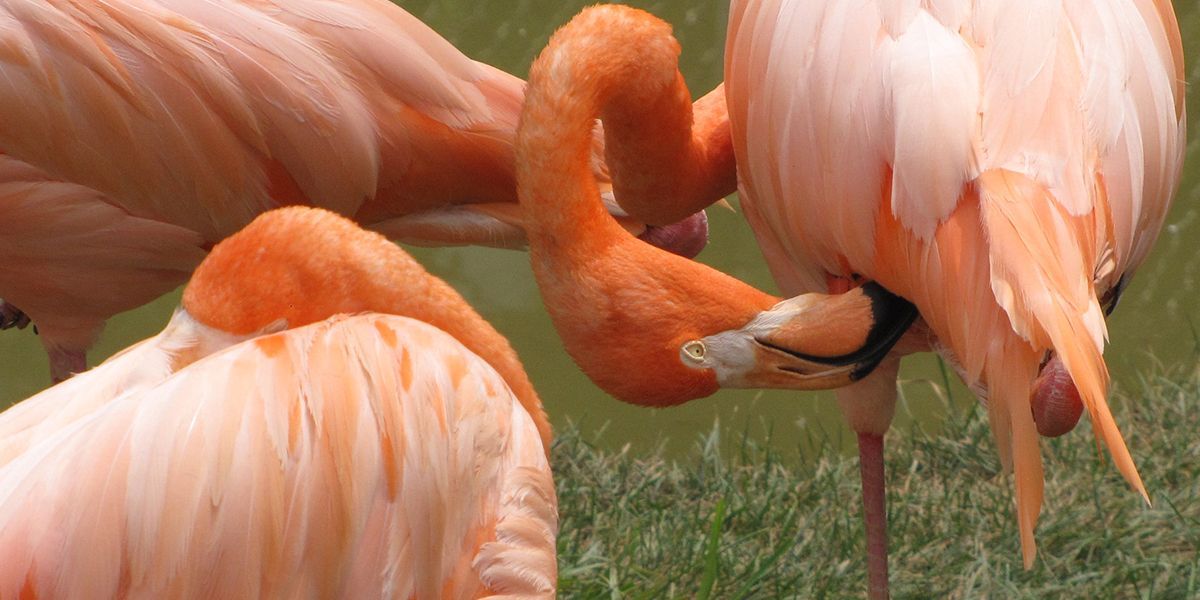Greater Flamingo
The Greater Flamingo is the largest of the 6 species of flamingo. Males can reach a height of 153 cm (5 feet). Despite its height it is a relatively light bird with a weight of 2 – 4 kg (4.4 – 8.8 lb). Flamingos are easily recognized by their long necks and legs and large curved beaks.
The Greater Flamingo is native to large parts of Africa, the Indian subcontinent and Europe. They inhabit shallow saltwater flats and spend most of their time wading but will swim under the right conditions. Their diet consists of what they can strain from the water and mud, This species is omnivorous.
Birds become sexually mature at about 3 years but do not usually breed until 5 – 10 years. A single egg is laid in a nest constructed from mud. The young are white to grey and they get their pink colour after several years.
The Greater Flamingo is native to large parts of Africa, the Indian subcontinent and Europe. They inhabit shallow saltwater flats and spend most of their time wading but will swim under the right conditions. Their diet consists of what they can strain from the water and mud, This species is omnivorous.
Birds become sexually mature at about 3 years but do not usually breed until 5 – 10 years. A single egg is laid in a nest constructed from mud. The young are white to grey and they get their pink colour after several years.
Fun Facts

scientific classification
Kingdom
Animalia
Phylum
Chordata
Class
Aves
Order
Phoenicopteriformes
Family
Phoenicopteridae
Genus
Phoenicopterus
Species
P. rosems
Where to find us
Safari Niagara has a flock of 20 flamingos
did you know?
Flamingos get their pink colour from the crustaceans (notably shrimp) they eat
They are one of the first animals you meet after entering the park
The first recorded zoo hatch of a chick was in 1959 at the Zoo Basel, Switzerland. Today these birds breed well in captivity.



